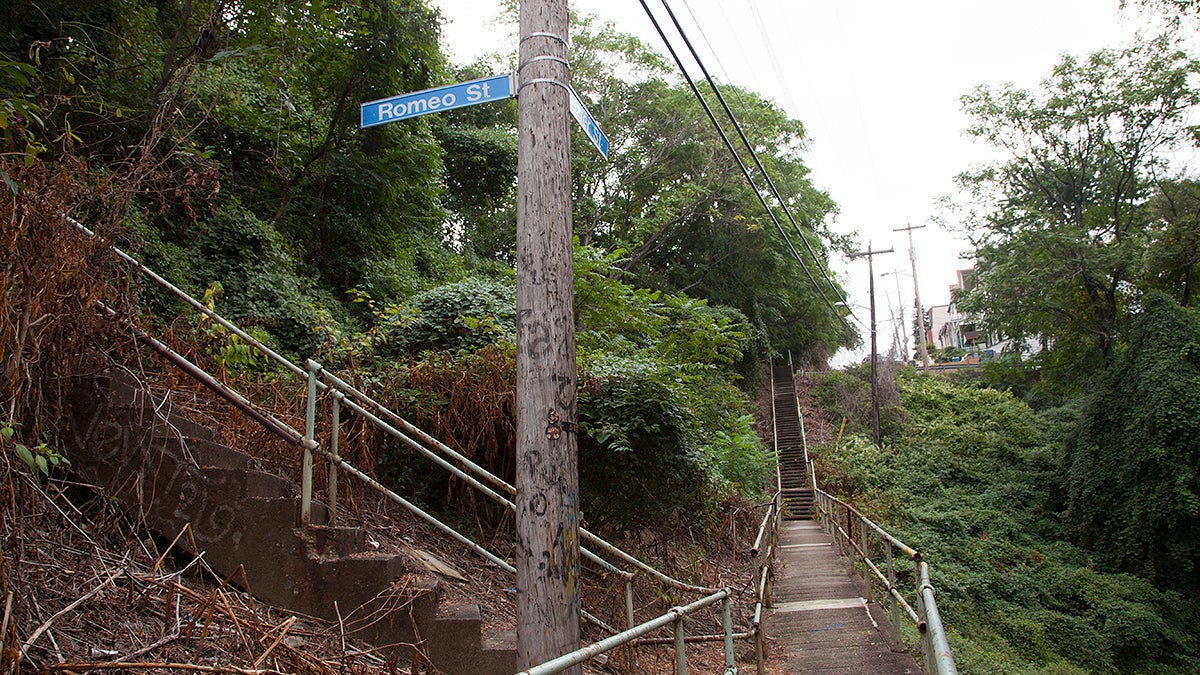Pittsburgh evaluates its hundreds of staircases for first time

The intersection of Romeo Street and Frazier Street, in the Oakland neighborhood of Pittsburgh. (Irina Zhorov/WESA)
Pittsburgh has more steps than any other U.S. city, but they’ve been a poorly managed asset. A new city survey hopes to improve maintenance efforts.
On October 3rd, Pittsburghers will walk up and down the formidable stairways of the hilly South Side Slopes neighborhood with maps in hand. The StepTrek, which started more than a decade ago, raises awareness and funds for the Slopes’ aging stairs.
The StepTrek is organized by the South Side Slopes Neighborhood Association, which has been taking care of local steps for years.
But now the city is stepping up — no pun intended — to look at the issue of stairs throughout the entire city.
The whole of Pittsburgh is a crinkled jumble of hills sloping down into the flats that flank its rivers. Long, sometimes zigzagging, sets of steps have helped people navigate the vertical maze of neighborhoods since the late 19th century, when the steps started going up.
But the stairways — there are about 700, more than in any other U.S. city — have never been a particularly well-managed asset.
In fact, until 1999, when a relative newcomer to the city named Bob Regan became a bit obsessed with the stairways and took a few months to catalogue them, the city didn’t even know how many there were or where they were.
Using Regan’s geo-tagged catalogue of steps, the city is conducting the first-ever comprehensive survey of its vertical infrastructure.
The effort largely relies on volunteer surveyors, who are trained to look for cracks, rust, chipping and other signs of deterioration on the steps and rails. So far more than 300 volunteers have signed up.
For now, Pittsburgh just wants to know what it’s dealing with. But, ultimately, the idea is to help the city prioritize maintenance for the steps, because currently workers are just putting out fires as complaints come in.
For 2015, the city’s budget includes $525,000 for the wall, step, and fence maintenance program.
That’s not a huge amount to begin with, and considering that steps are competing with falling walls and broken fences for that money, figuring out where the dollars could be most beneficial is key.
WHYY is your source for fact-based, in-depth journalism and information. As a nonprofit organization, we rely on financial support from readers like you. Please give today.


